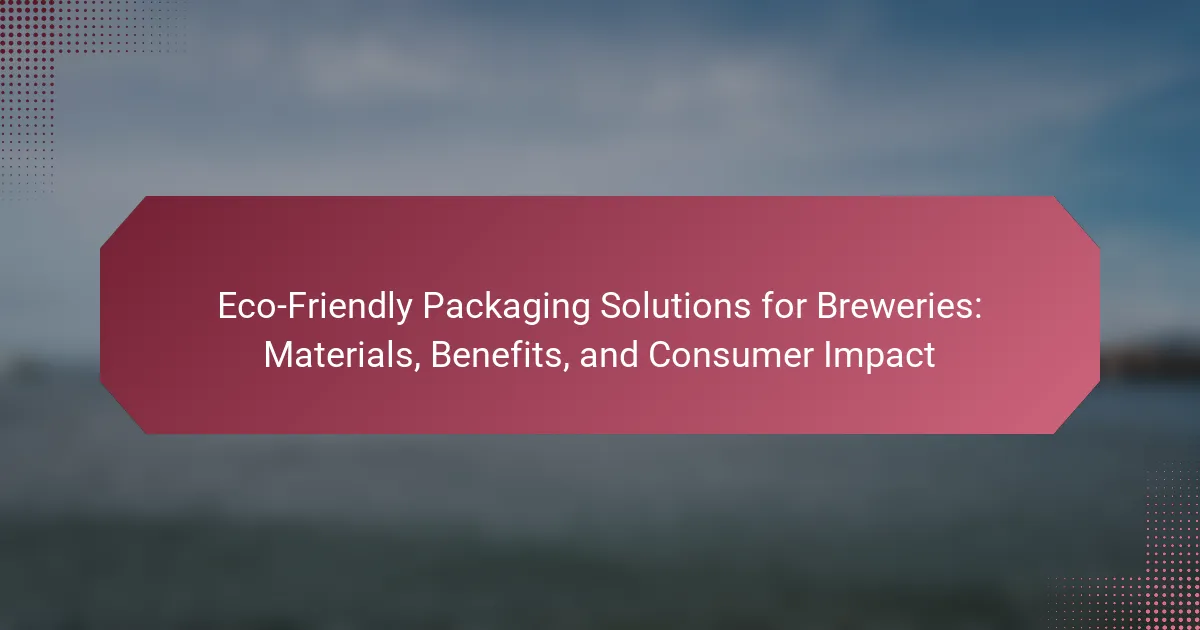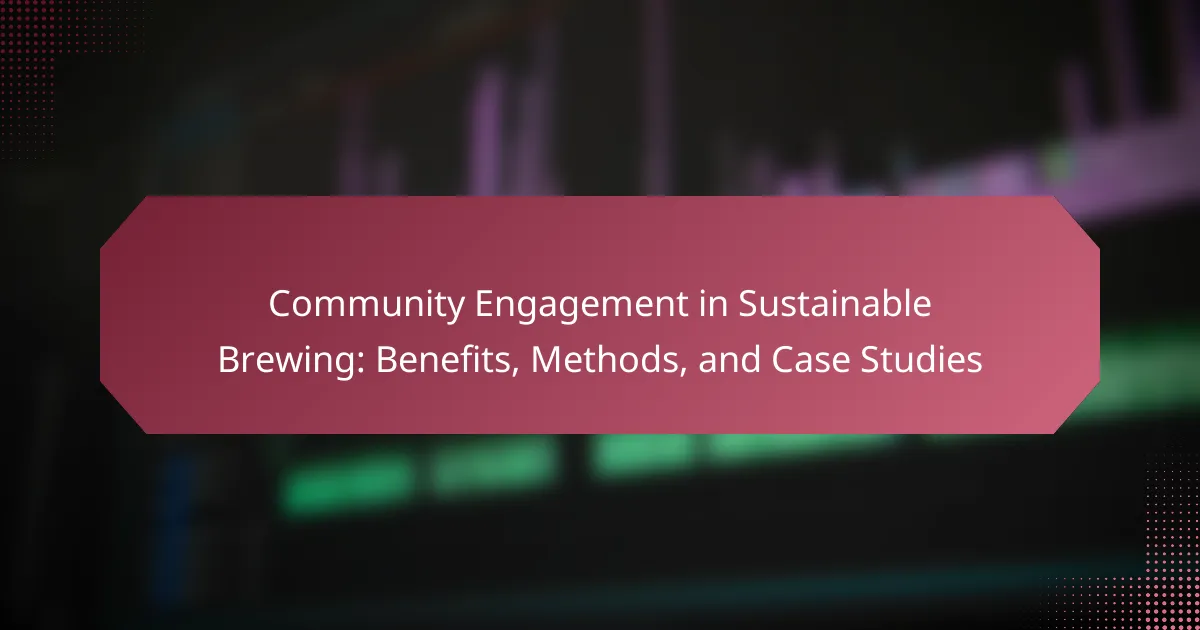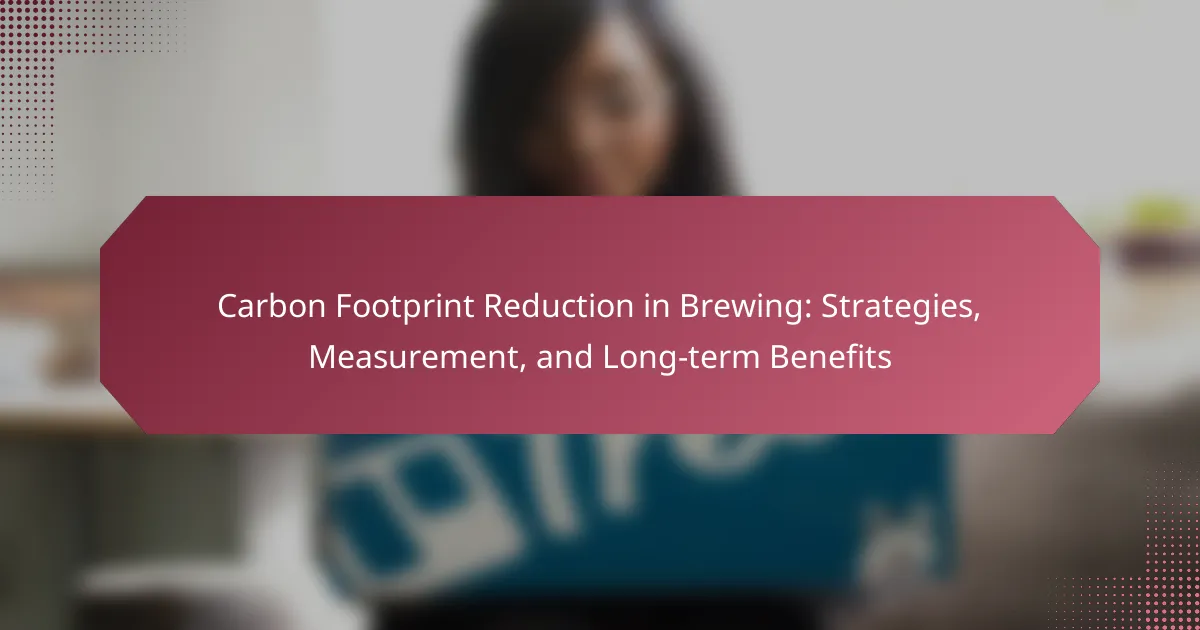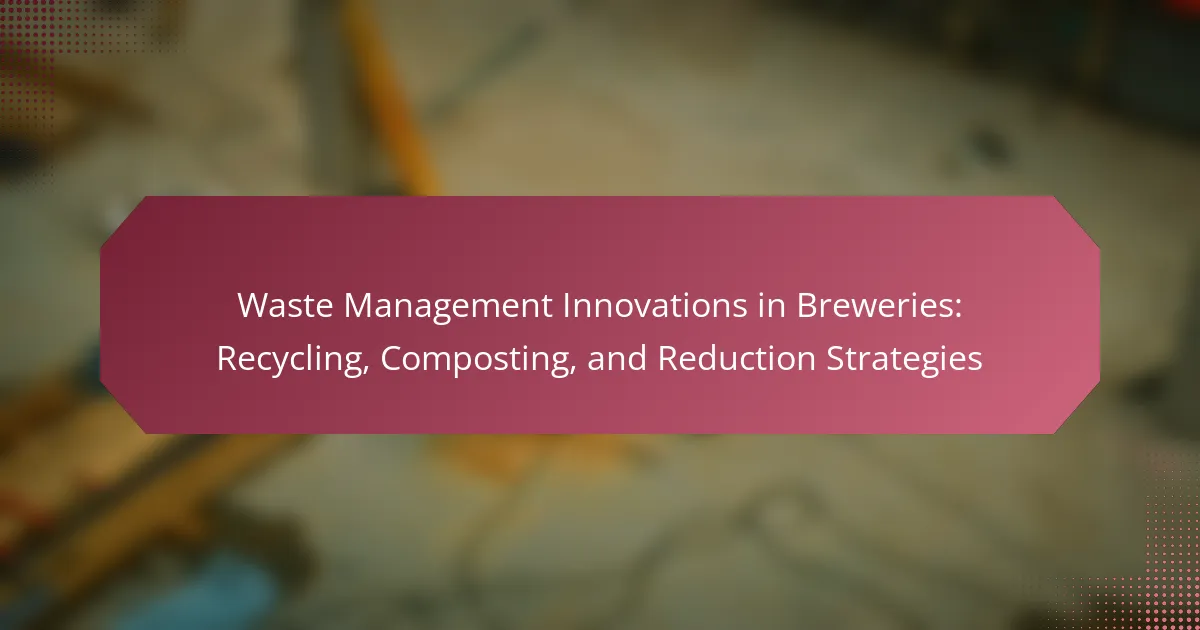Eco-friendly packaging solutions for breweries encompass materials such as biodegradable substances, recycled paper, and reusable containers. These sustainable options significantly reduce landfill waste and energy consumption while appealing to the growing demographic of eco-conscious consumers. Research indicates that a majority of consumers prefer brands utilizing sustainable packaging, with many willing to pay a premium for such choices. The article examines the various materials used in eco-friendly packaging, the benefits they offer to both the environment and breweries, and the positive consumer perceptions that drive purchasing decisions. By adopting these practices, breweries not only contribute to environmental sustainability but also enhance brand loyalty among environmentally aware customers.
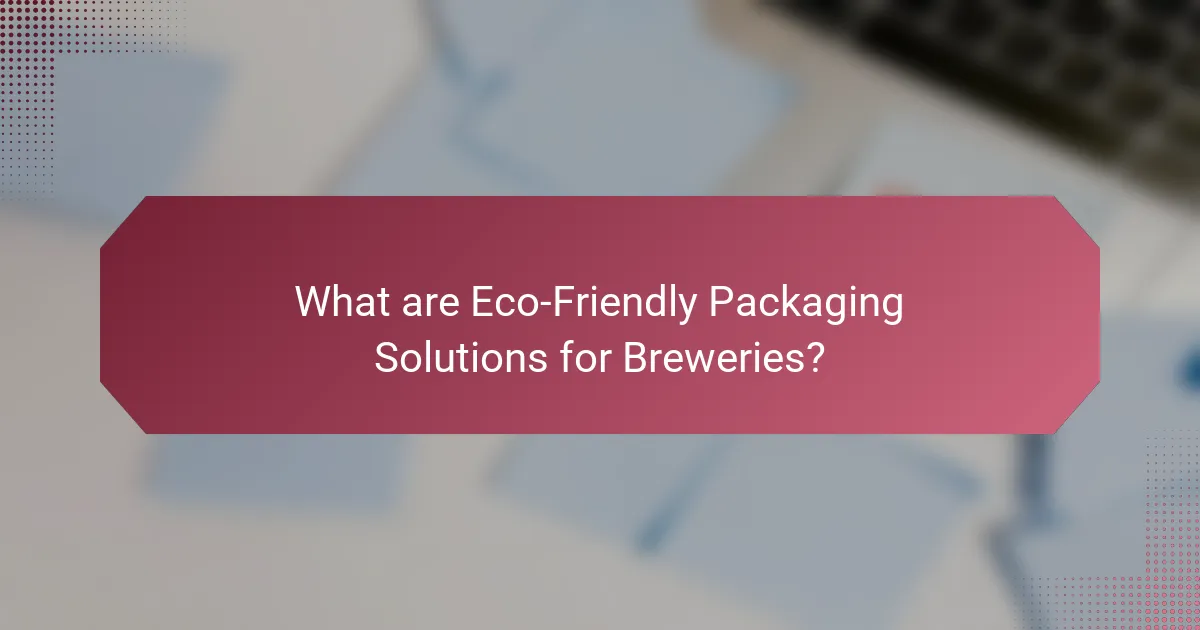
What are Eco-Friendly Packaging Solutions for Breweries?
Eco-friendly packaging solutions for breweries include biodegradable materials, recycled paper, and reusable containers. Biodegradable materials break down naturally, reducing landfill waste. Recycled paper packaging uses less energy and resources compared to virgin materials. Reusable containers promote sustainability by minimizing single-use products. Many breweries adopt glass bottles and aluminum cans, which are highly recyclable. These solutions not only lessen environmental impact but also appeal to eco-conscious consumers. Studies show that 74% of consumers prefer brands that use sustainable packaging.
How do these packaging solutions contribute to sustainability?
Eco-friendly packaging solutions contribute to sustainability by reducing waste and minimizing environmental impact. These solutions often utilize biodegradable or recyclable materials. For example, plant-based plastics decompose more easily than traditional plastics. Additionally, many eco-friendly packages are designed for reuse, promoting a circular economy. Studies show that using recycled materials can reduce energy consumption by up to 70%. Breweries adopting these solutions can lower their carbon footprint significantly. Furthermore, sustainable packaging often requires less water and fewer chemicals in production. This overall reduction in resource consumption supports environmental conservation efforts.
What materials are commonly used in eco-friendly packaging?
Commonly used materials in eco-friendly packaging include recycled paper, biodegradable plastics, and plant-based materials. Recycled paper reduces waste and lowers resource consumption. Biodegradable plastics break down more easily than traditional plastics, minimizing environmental impact. Plant-based materials, such as cornstarch or sugarcane, are renewable and compostable. Other options include glass and metal, which are recyclable and reusable. These materials help breweries adopt sustainable practices while meeting consumer demand for eco-friendly products.
How do these materials compare to traditional packaging options?
Eco-friendly packaging materials generally offer better sustainability compared to traditional packaging options. They are often made from renewable resources, reducing reliance on fossil fuels. Traditional packaging, such as plastic and Styrofoam, contributes significantly to environmental pollution. In contrast, eco-friendly materials can be biodegradable or recyclable, minimizing waste. Studies show that using biodegradable materials can reduce landfill waste by up to 30%. Moreover, eco-friendly packaging often has a lower carbon footprint during production. This shift not only benefits the environment but also aligns with consumer preferences for sustainable products.
What are the key benefits of using eco-friendly packaging in breweries?
Eco-friendly packaging in breweries offers several key benefits. It reduces environmental impact by minimizing waste and pollution. Sustainable materials, like recycled paper or biodegradable plastics, help lessen carbon footprints. This type of packaging often appeals to environmentally conscious consumers. Research shows that 73% of millennials are willing to pay more for sustainable products. Additionally, eco-friendly packaging can enhance brand image and loyalty. Breweries adopting these practices may attract new customers. Cost savings can also occur through reduced material costs and waste disposal fees. Overall, eco-friendly packaging supports both the environment and business growth.
How does eco-friendly packaging impact the environment?
Eco-friendly packaging significantly reduces environmental impact. It minimizes waste generation by using biodegradable or recyclable materials. These materials break down more easily in landfills compared to traditional plastics. Eco-friendly packaging also decreases carbon footprint during production. Sustainable practices in sourcing materials lead to less deforestation and habitat destruction. Research indicates that using recycled materials can save up to 70% of energy compared to new materials. Furthermore, eco-friendly packaging promotes consumer awareness about sustainability. This shift encourages companies to adopt greener practices, creating a positive feedback loop for the environment.
What economic advantages do breweries gain from sustainable packaging?
Breweries gain several economic advantages from sustainable packaging. Firstly, sustainable packaging often reduces material costs. Many eco-friendly materials are lightweight, which decreases shipping expenses. Secondly, breweries can attract environmentally conscious consumers. This demographic is willing to pay a premium for sustainable products. Additionally, sustainable packaging can enhance brand reputation. Positive public perception can lead to increased customer loyalty. Lastly, breweries may benefit from tax incentives. Many governments provide financial benefits for adopting eco-friendly practices. These advantages collectively contribute to improved profitability for breweries.
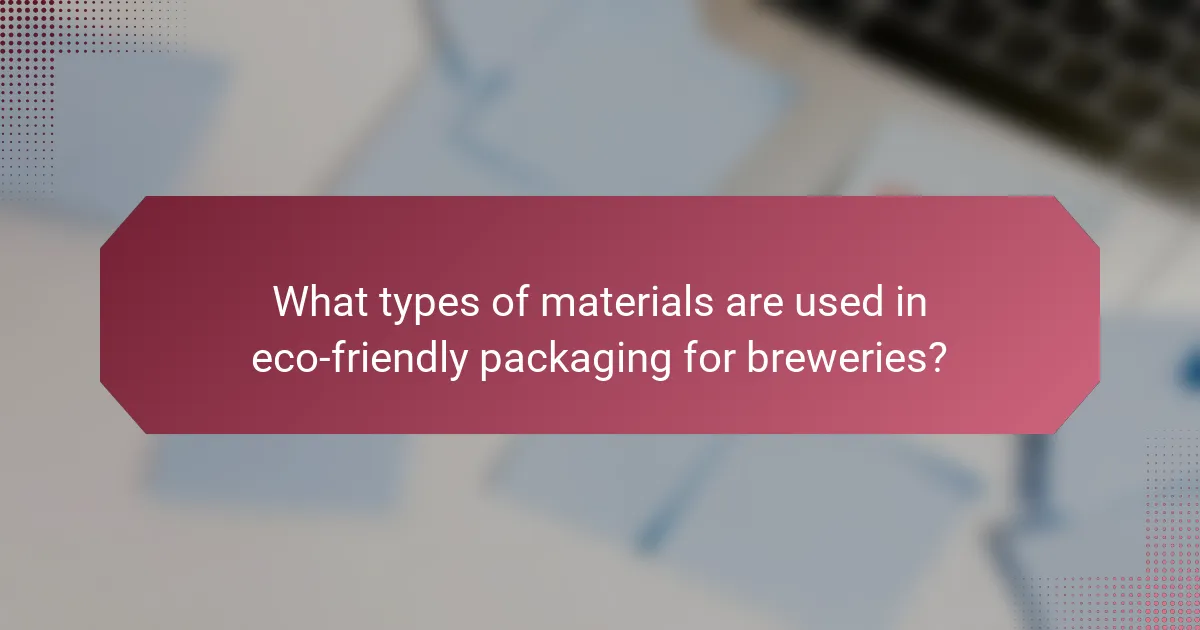
What types of materials are used in eco-friendly packaging for breweries?
Eco-friendly packaging for breweries commonly uses materials such as recycled paper, cardboard, and glass. These materials are sustainable and reduce environmental impact. Biodegradable plastics and compostable materials are also popular choices. They help in minimizing waste and enhancing recyclability. Additionally, aluminum is frequently utilized due to its high recyclability rate. Studies show that using these materials can significantly reduce carbon footprints. Breweries adopting these eco-friendly options contribute to a more sustainable industry.
What are the most popular biodegradable materials?
The most popular biodegradable materials include PLA (polylactic acid), PHA (polyhydroxyalkanoates), and paper. PLA is derived from renewable resources like corn starch. It is widely used in food packaging and disposables. PHA is produced by microbial fermentation of organic materials. This material is compostable and suitable for various applications. Paper, made from wood pulp, is biodegradable and recyclable. These materials are favored for their environmental benefits. They reduce plastic pollution and contribute to sustainable practices in industries like brewing.
How do these biodegradable materials break down over time?
Biodegradable materials break down over time through natural processes involving microorganisms. These materials are designed to decompose into natural substances like water, carbon dioxide, and biomass. Microbial activity, including bacteria and fungi, plays a crucial role in this breakdown. Environmental conditions such as moisture, temperature, and oxygen availability significantly affect the decomposition rate. For instance, warmer temperatures and adequate moisture levels enhance microbial activity, leading to faster breakdown. Research indicates that certain biodegradable plastics can decompose in industrial composting facilities within 90 to 180 days. In contrast, some materials may take longer in natural environments, ranging from several months to years, depending on the conditions.
What are the sourcing challenges for biodegradable materials?
Sourcing challenges for biodegradable materials include limited availability and higher costs. Many biodegradable materials rely on specific agricultural inputs, which can be subject to market fluctuations. This dependency can lead to inconsistent supply chains. Additionally, the production processes for these materials often require specialized technology, which may not be widely accessible. Regulatory hurdles can also complicate sourcing, as compliance with environmental standards varies by region. Furthermore, consumer demand for biodegradable options can outpace supply, creating shortages. A study by the European Bioplastics Association highlights these challenges, noting that the market for biodegradable materials is still developing.
What role do recycled materials play in eco-friendly packaging?
Recycled materials are essential in eco-friendly packaging as they reduce waste and conserve resources. Using recycled content decreases the demand for virgin materials. This process minimizes environmental impact by lowering energy consumption during production. Studies show that recycled paper and plastics can significantly reduce greenhouse gas emissions. Additionally, incorporating recycled materials enhances brand sustainability. Consumers increasingly prefer products with eco-friendly packaging. This trend influences purchasing decisions and boosts brand loyalty. Overall, recycled materials play a crucial role in promoting sustainability in the packaging industry.
How is recycled content integrated into packaging solutions?
Recycled content is integrated into packaging solutions by incorporating materials that have been previously used and processed. This often includes post-consumer recycled plastics, paper, and glass. Manufacturers source these materials from recycling facilities or through collection programs. The recycled materials are then cleaned, shredded, and reprocessed into new packaging products. For example, many beverage companies use recycled PET (rPET) for bottles. According to the National Association for PET Container Resources, using rPET can reduce energy consumption by up to 75% compared to virgin materials. This integration helps decrease waste and lowers the carbon footprint of packaging solutions.
What are the benefits of using recycled materials for breweries?
Using recycled materials for breweries offers several significant benefits. Firstly, it reduces the environmental impact of production. This practice conserves natural resources and minimizes waste in landfills. Secondly, breweries can lower their operational costs. Recycled materials are often cheaper than new materials. Additionally, using recycled content can enhance a brewery’s brand image. Consumers increasingly prefer eco-friendly practices and products. This can lead to increased customer loyalty and sales. According to a 2021 survey by Nielsen, 73% of consumers are willing to pay more for sustainable brands. Therefore, utilizing recycled materials aligns with both environmental goals and market demand.
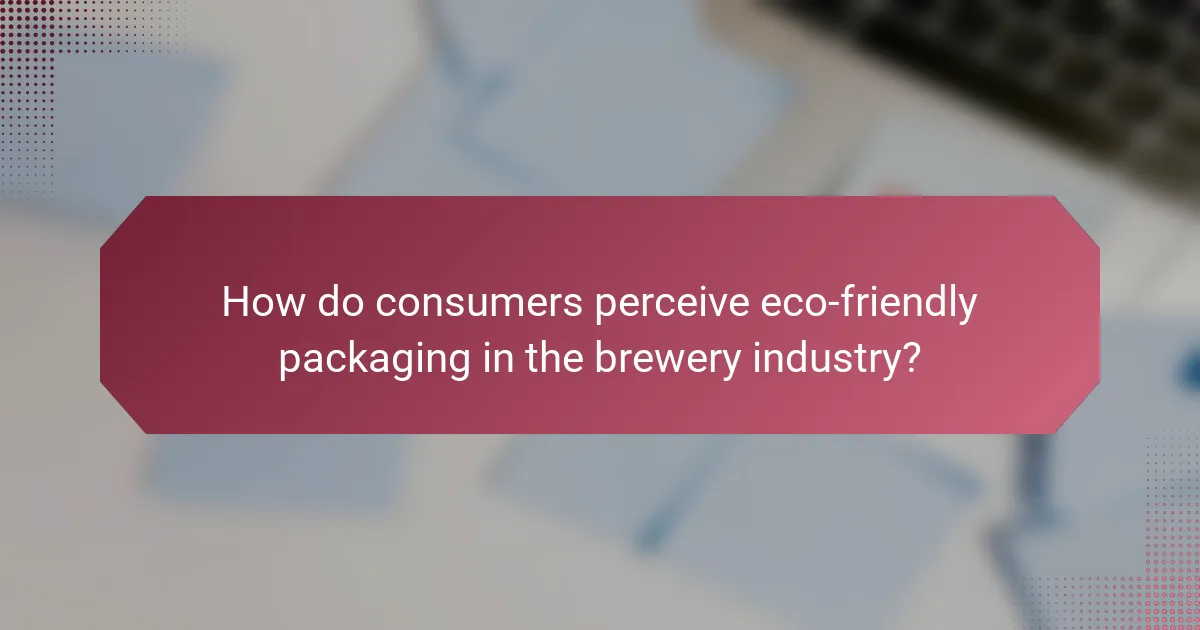
How do consumers perceive eco-friendly packaging in the brewery industry?
Consumers generally perceive eco-friendly packaging in the brewery industry positively. They associate it with sustainability and environmental responsibility. A survey by Nielsen found that 66% of global consumers are willing to pay more for sustainable brands. This indicates a strong preference for eco-friendly options. Additionally, consumers often believe that breweries using such packaging care more about their impact on the environment. This perception can enhance brand loyalty and attract environmentally-conscious customers. In summary, eco-friendly packaging resonates well with consumers in the brewery industry, driving positive perceptions and purchasing decisions.
What factors influence consumer preferences for sustainable packaging?
Consumer preferences for sustainable packaging are influenced by environmental awareness, product quality, and brand reputation. Research indicates that 66% of consumers prefer brands committed to sustainability. Environmental awareness drives consumers to seek eco-friendly options, as they are more informed about climate change and waste issues. Product quality plays a crucial role; consumers often associate sustainable packaging with higher-quality products. Brand reputation also impacts preferences; brands perceived as responsible are more likely to attract eco-conscious consumers. Additionally, price sensitivity can affect choices, as some consumers may prioritize cost over sustainability. These factors collectively shape consumer behavior towards sustainable packaging options.
How does eco-friendly packaging affect consumer purchasing decisions?
Eco-friendly packaging significantly influences consumer purchasing decisions. Consumers increasingly prefer products with sustainable packaging. A study by Nielsen found that 66% of global consumers are willing to pay more for sustainable brands. This trend is particularly strong among younger demographics. Eco-friendly packaging enhances brand perception and loyalty. Brands using sustainable materials often see increased sales and customer retention. Additionally, eco-conscious packaging can differentiate products in a crowded market. Overall, eco-friendly packaging is a key factor in modern consumer choices.
What demographic trends are associated with eco-conscious consumers?
Eco-conscious consumers tend to be younger, predominantly aged between 18 and 34. This demographic is increasingly aware of environmental issues. They often prioritize sustainability in their purchasing decisions. Research shows that 73% of millennials are willing to pay more for eco-friendly products. Additionally, eco-conscious consumers are generally more educated. Higher education levels correlate with increased environmental awareness. Urban dwellers also show a stronger inclination towards eco-conscious behavior. This trend is evident in cities with robust sustainability initiatives. Furthermore, women are more likely than men to identify as eco-conscious consumers. These demographic trends highlight the growing importance of sustainability in consumer behavior.
What are some best practices for breweries implementing eco-friendly packaging?
Breweries can implement eco-friendly packaging by using sustainable materials. This includes options like recycled cardboard and biodegradable plastics. They should also focus on reducing packaging size to minimize waste. Utilizing returnable bottles and kegs can significantly lower environmental impact. Partnering with suppliers who prioritize sustainability is essential. Breweries should educate consumers on the importance of eco-friendly packaging. Implementing a recycling program can further enhance sustainability efforts. According to a 2021 study by the Beverage Industry, 60% of consumers prefer brands that use eco-friendly packaging.
How can breweries effectively communicate their sustainable efforts to consumers?
Breweries can effectively communicate their sustainable efforts to consumers through transparent labeling and storytelling. Clear labeling on packaging highlights eco-friendly materials used. Storytelling can engage consumers by sharing the journey of sustainability initiatives. Breweries should utilize social media to showcase their sustainability practices. Regular updates about environmental impact can keep consumers informed. Collaborating with environmental organizations enhances credibility. Hosting events focused on sustainability can foster community engagement. Research shows 66% of consumers are willing to pay more for sustainable brands.
What common challenges do breweries face when transitioning to eco-friendly packaging?
Breweries face several common challenges when transitioning to eco-friendly packaging. One major challenge is the higher cost of sustainable materials compared to traditional options. This can strain budgets, especially for smaller breweries. Another challenge is the availability of eco-friendly packaging materials. Limited supply can delay implementation and increase logistical complexities.
Additionally, breweries often encounter consumer resistance to new packaging formats. Customers may prefer familiar packaging, creating a barrier to acceptance. There is also the challenge of ensuring that eco-friendly packaging meets quality and durability standards. Packaging must protect the product and maintain freshness.
Finally, breweries may struggle with the lack of industry standards for eco-friendly packaging. This can lead to confusion and inconsistency in consumer perception. These challenges require careful planning and strategy for successful transition.
Eco-friendly packaging solutions for breweries encompass materials such as biodegradable plastics, recycled paper, and reusable containers, aimed at reducing environmental impact and appealing to eco-conscious consumers. The article explores how these materials contribute to sustainability by minimizing waste and lowering carbon footprints while highlighting the economic advantages for breweries, including cost savings and enhanced brand loyalty. It also examines consumer perceptions of sustainable packaging, emphasizing the growing preference for eco-friendly options and the demographic trends associated with eco-conscious consumers. Additionally, the article outlines best practices for breweries in implementing these solutions and the challenges they may face during the transition.
